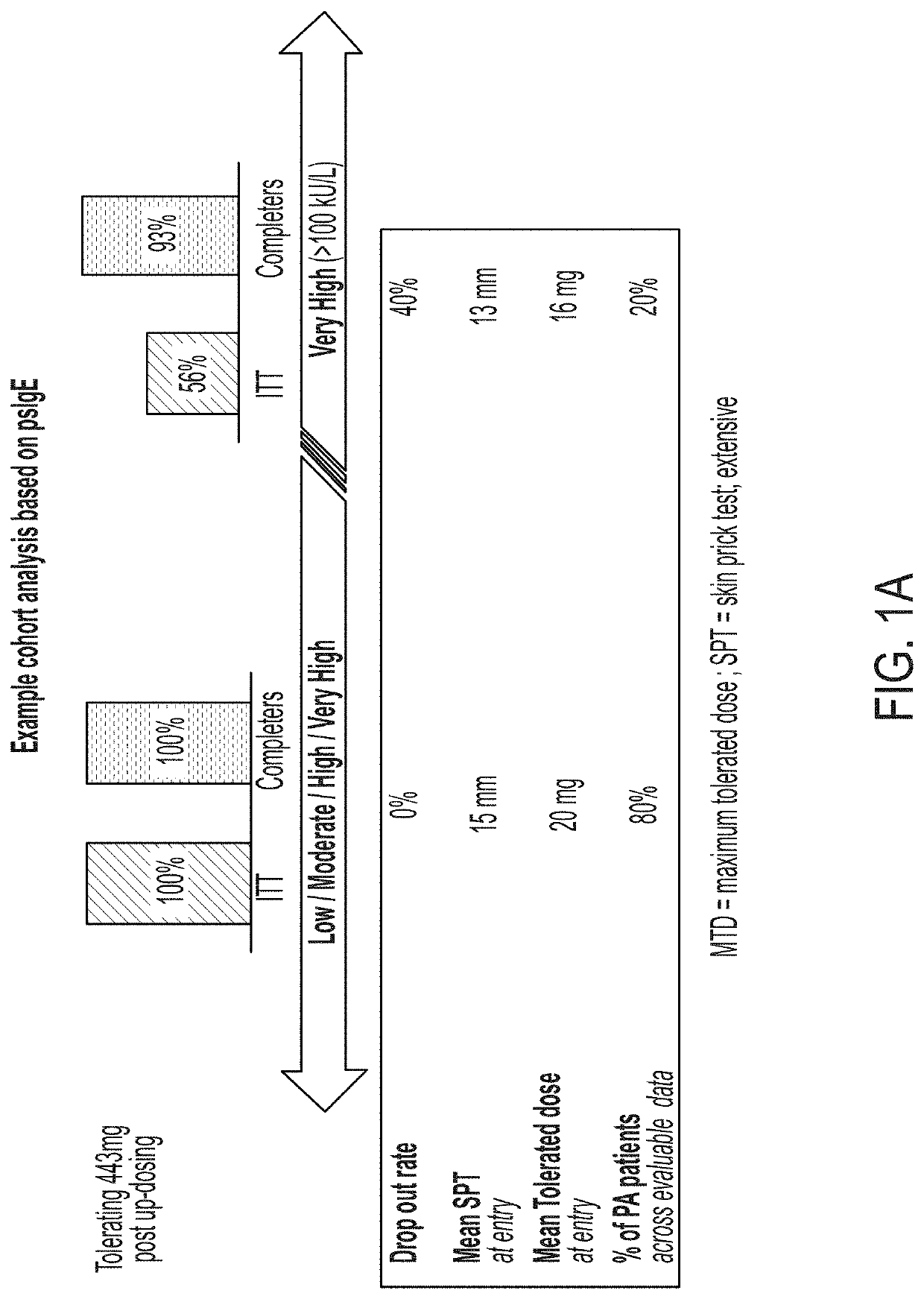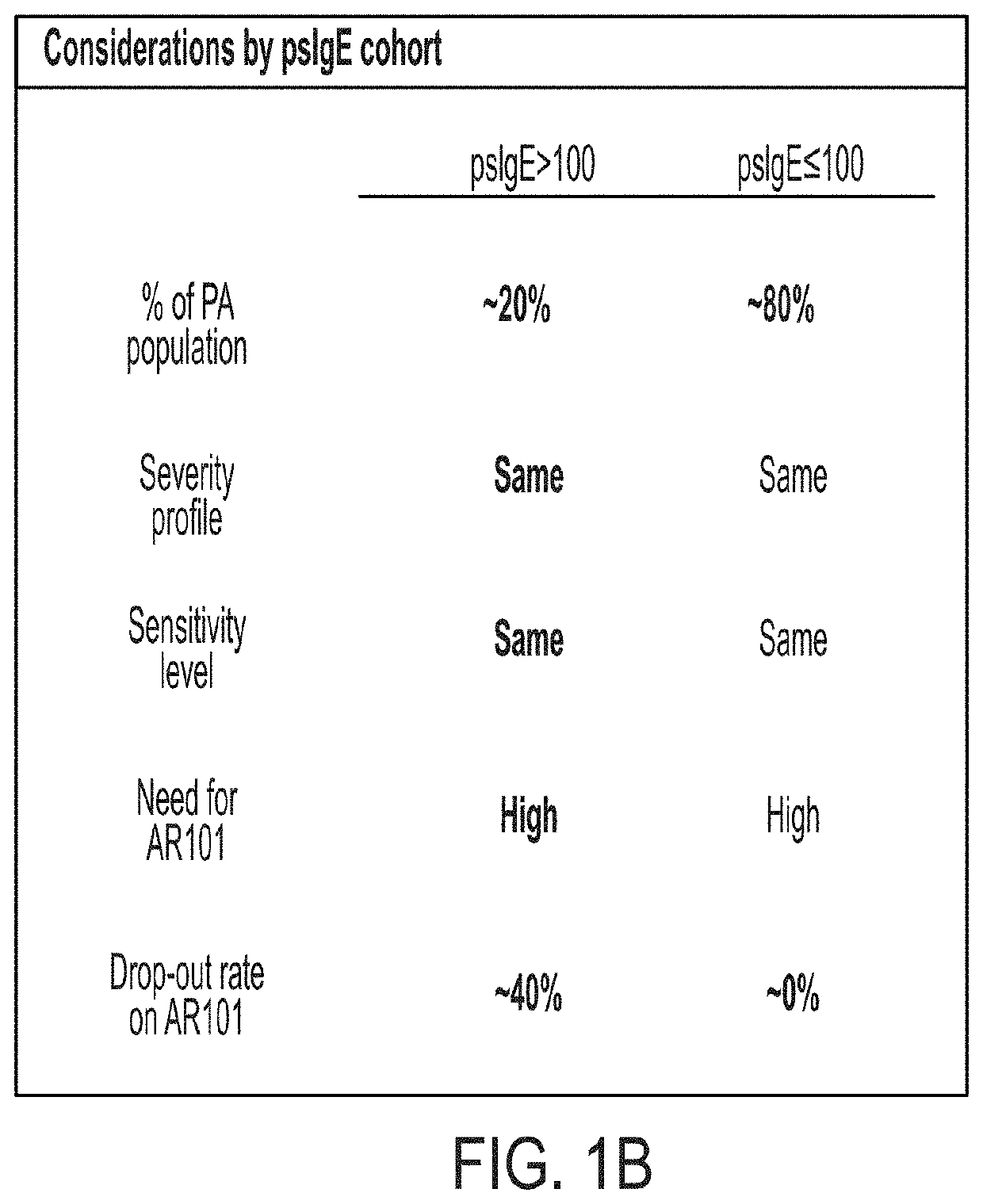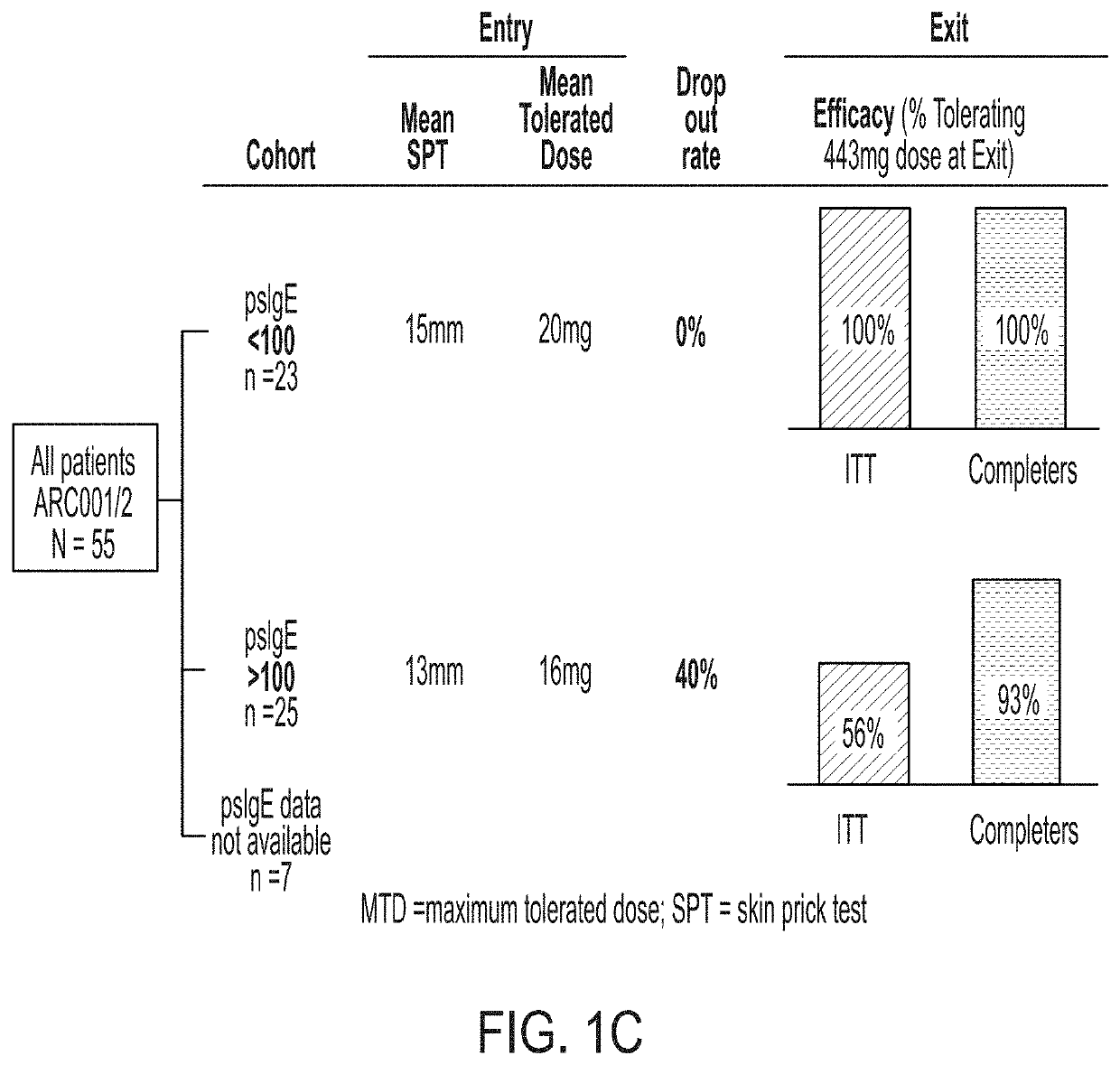Methods of oral immunotherapy
an immunotherapy and oral technology, applied in the field of immunology disorders, can solve the problems of not being able to benefit from oral immunotherapy alone, no approved disease-modifying therapy for treating food allergies, high adverse reactions, etc., and achieve the effects of reducing the risk or incidence of adverse events, reducing the dose, and reducing the dose of allergic peanut composition
- Summary
- Abstract
- Description
- Claims
- Application Information
AI Technical Summary
Benefits of technology
Problems solved by technology
Method used
Image
Examples
embodiment 1
[0198]A method of treating a subject for a peanut allergy, comprising:
[0199]administering to the subject at least one dose of an allergenic peanut composition, wherein the subject is selected for treatment based on having a level of peanut-specific IgEs at or below a predetermined threshold.
embodiment 2
[0200]A method of treating a subject for a peanut allergy, comprising:
[0201]selecting a subject for treatment based on having a level of peanut-specific IgEs at or below a predetermined threshold; and
[0202]administering to the selected subject at least one dose of an allergenic peanut composition.
embodiment 3
[0203]A method of treating a subject for a peanut allergy, comprising:
[0204]measuring a level of peanut-specific IgEs for the subject;
[0205]selecting the subject for treatment based on having a level of peanut-specific IgEs at or below a predetermined threshold; and
[0206]administering to the selected subject at least one dose of an allergenic peanut composition.
PUM
| Property | Measurement | Unit |
|---|---|---|
| time | aaaaa | aaaaa |
| time | aaaaa | aaaaa |
| time | aaaaa | aaaaa |
Abstract
Description
Claims
Application Information
 Login to View More
Login to View More - R&D
- Intellectual Property
- Life Sciences
- Materials
- Tech Scout
- Unparalleled Data Quality
- Higher Quality Content
- 60% Fewer Hallucinations
Browse by: Latest US Patents, China's latest patents, Technical Efficacy Thesaurus, Application Domain, Technology Topic, Popular Technical Reports.
© 2025 PatSnap. All rights reserved.Legal|Privacy policy|Modern Slavery Act Transparency Statement|Sitemap|About US| Contact US: help@patsnap.com



